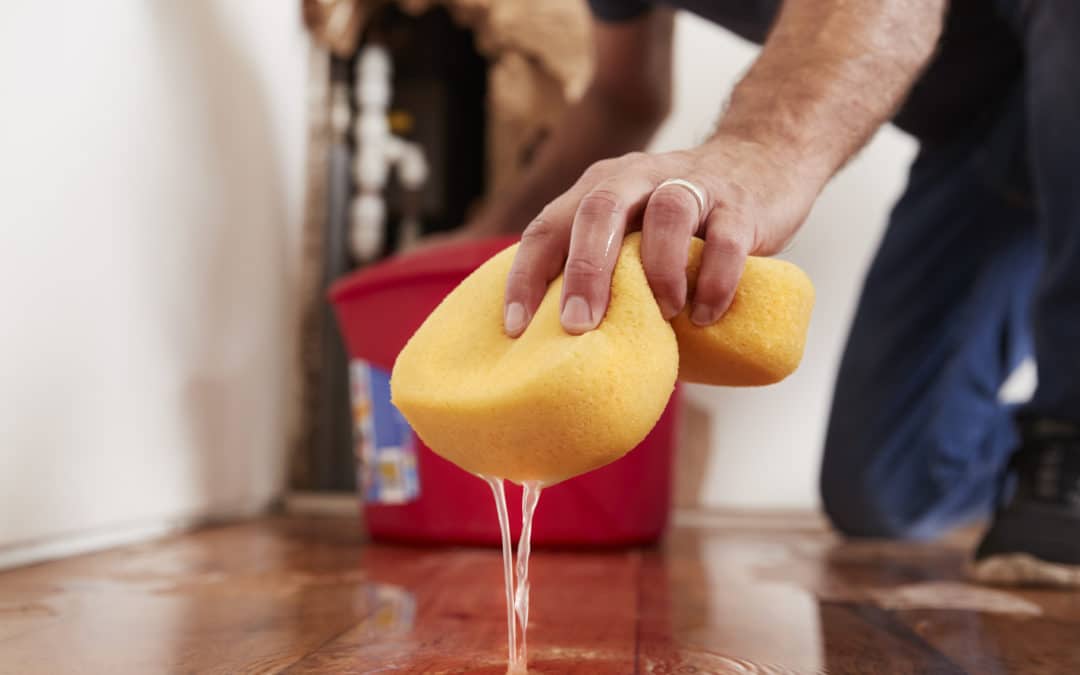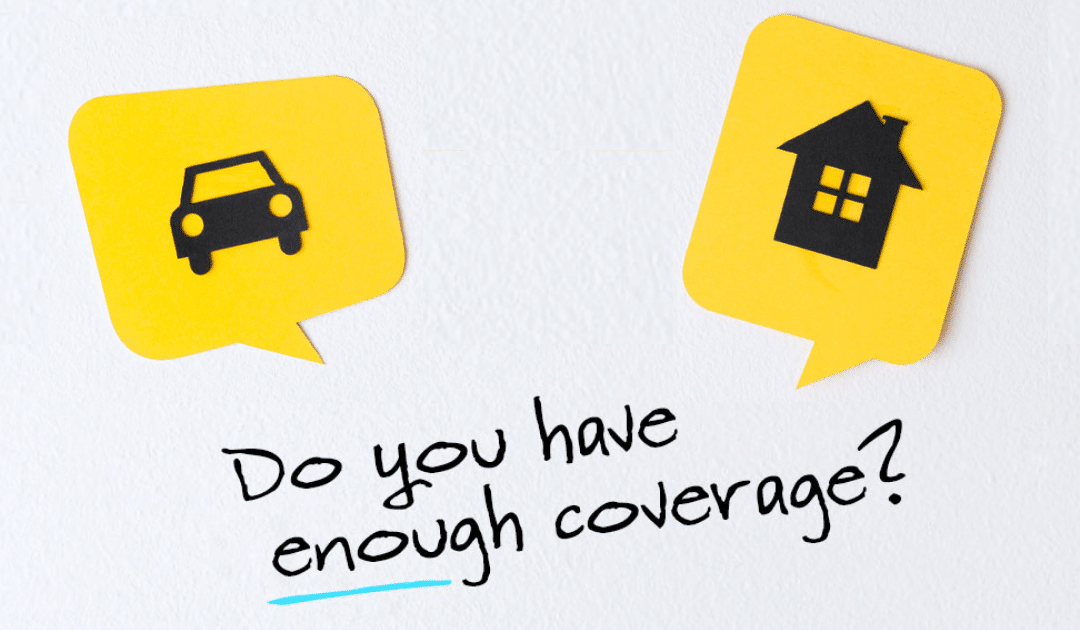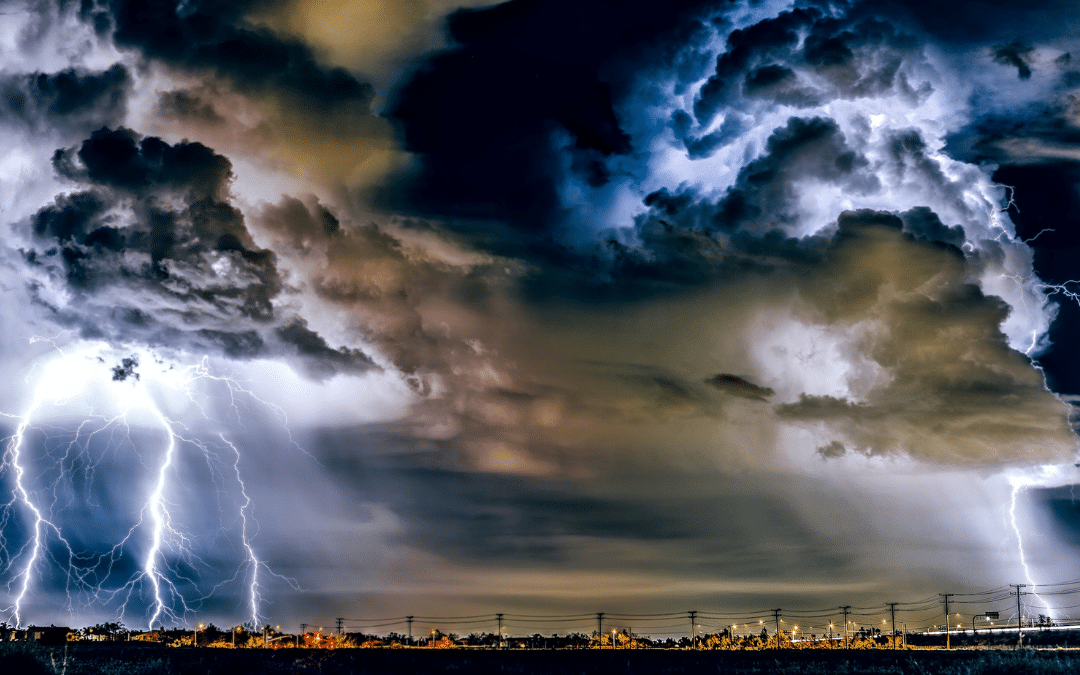
by California Casualty | Homeowners Insurance Info |
Imagine walking downstairs and seeing your basement filled with water and your precious possessions floating around… It’s not something anyone wants to ever experience, but unfortunately, it’s something that many Americans deal with each rainy season.
A flooded basement can cost you thousands (maybe more), and it’s not just in lost belongings. Flooding can cause damage to your walls and floor and also lead to mold, mildew, and other health hazards.
Sometimes flooding is a one-time occurrence. Oftentimes, it is more frequent. Knowing the triggers of flooding can help you take steps to keep your basement dry and your possessions safe. Here are the common causes of a flooded basement. Pro Tip – You can help protect against many of them with flood insurance.
1. Location
Your location is one of the key reasons that your home floods. You may live in a low-lying area prone to flash floods. Your home may sit at the bottom of a hill, drawing precipitation toward it. If the land around your home is sloped down toward it, there could be a risk of your basement flooding. Take a critical look at your property. Look for depressions or standing water around your home, in the ground, or with pavement that has settled or deteriorated. These are areas that you will want to address.
What you can do: Fill the depressions in the ground with a mound of soil to create a slope away from your home. Use clay-based rather than sandy soil, as it will help to repel the water. Remove and/or replace pavement, and again, slope it away from your home. If a hill next to your house is causing the problem, a civil engineer may be able to provide some guidance.
2. Weatherproofing
During construction, your home’s foundation, and your basement’s walls and floor, should have received a coating of sealant to keep water out. However, sealants can deteriorate over time, allowing surface water to leak in. Surface water also can pool around your home due to the location and settings of your lawn irrigation system. Both of these issues are relatively simple to fix.
What you can do: Avoid placing irrigation next to the house, or limit water dispersed there. Make sure your irrigation system does not turn on when there has been plenty of rain. You also can take steps to reseal your basement. Use a polyurethane caulk designed for masonry to seal any cracks or gaps that are larger than 1/8 inch wide. (For finished basements, consult your local hardware store for options.) Then apply a waterproof coating to your basement’s walls and floor. You also can use waterproof paint.
3. Groundwater
If surface water is not the issue, groundwater might be. Underground pressure can push the water into your basement through cracks or holes. If you notice water coming up through the concrete floor, or coming in from multiple points, this could indicate groundwater.
What you can do: A perimeter drain system can help. Such systems relieve the pressure and use gravity to pull the water to the sides and down. They can be installed above or below the slab. An under-floor system may be better but it is more expensive. It requires some of the concrete floor to be removed in order to install the drainage pipes. If you already have a drainage system, such as drain tile or weeping tile, and you are still seeing water or moisture, it’s possible that you need to replace it. Those systems may degrade over time.
4. Clogged Gutters and Downspouts
It’s not unusual for gutters to be clogged with leaves and other debris. This prevents them from effectively doing their job, which is draining the water into a downspout and away from your home. Improperly positioned or broken downspouts also contribute to the problem. Water that drains too close to your house not only can create flooding; it can erode soil which can lead to further problems.
What you can do: Clean your gutters a few times a year. Install a gutter guard to reduce future clogs. Make sure your downspout drains far enough from the wall, at least 5-6 feet. Some experts suggest as much as 10 feet.
5. Plumbing Leaks
If you notice a large amount of water quickly, it could be a plumbing leak. Broken, cracked, and clogged pipes can cause this type of emergency. During winter months, water freezes and expands, sometimes bursting pipes. All of these issues can cause your basement to flood.
What you can do: Most likely, your pipes have to be replaced. Call your plumber to repair the issue as soon as possible.
6. Sump Pump Failure
You may have a sump pump installed, a device that collects excess water and drains it outside your home. A sump pump is powered by electricity, and therefore only works when there is power. Consider buying a sump pump with backup battery power to avoid any interruptions. If your sump pump fails because of lack of power, or because it is not working properly, that could cause your basement to flood.
What you can do: Regular inspection, cleaning, and testing your sump pump can help. Consider an add-on to your homeowner’s insurance of sump pump discharge or overflow coverage. This can help cover the costs of repair and replacement in the event of a sump pump failure.
7. Sewer Backup
Heavy rain can sometimes back up the municipal sewer system. Sewer backups also may occur due to sewer lines that are clogged with waste, tree roots, or other debris. When these things happen, flooding in your basement can occur, and the results will, at minimum, be smelly.
What you can do: If your basement is flooded with sewage, get professional help to clean it. You also will likely need to get the local government involved. Finally, you can install backflow preventers to help keep the sewage out of your house.
If your basement does flood, know that an insurance policy can help cover the costs. Many people don’t realize that a traditional homeowner’s insurance does not cover floods. For that, you will need a separate policy. If you’re in a flood zone, you will want that extra insurance.
There is a 30-day waiting period to buy flood insurance, so with the rainy season upon us don’t wait until the last minute!
This article is furnished by California Casualty, providing auto and home insurance to educators, law enforcement officers, firefighters, and nurses. Get a quote at 1.866.704.8614 or www.calcas.com.

by California Casualty | Homeowners Insurance Info |
Your home is one of your greatest investments; you need to make sure that it’s fully protected. That’s where home insurance comes in, but it’s not one-size-fits-all. There are plenty of decisions to make when buying your own policy- from coverage limits and extra protection for your belongings to important add-ons like water back up and sump pump discharge or overflow coverage and flood insurance.
It’s easy to make a quick choice when looking for insurance without realizing there could be major consequences (that could cost you thousands of dollars out-of-pocket). That’s why we’ve compiled the most common home insurance purchasing mistakes, so that you won’t make them.
Don’t just look at the price.
Of course, you want a good price. However, sometimes a cheap policy is a red flag. The company may be shady. Talk to friends and neighbors about companies they use. See which ones are endorsed by your union, bank, etc. If you’re worried that the price is “too good to be true,” check the coverage to make sure it’s not missing important items. Also, consider that there are many ways to lower your home insurance costs if price is a concern.
Don’t buy the wrong type of policy.
There’s a different policy for insuring your home when you’re living in it, versus insuring your home when you’re renting it out. Make sure your policy addresses your living situation. If you have the wrong type of policy, there is a chance your claim may not be covered.
Don’t underinsure your home.
It may be tempting to insure your home for the amount that you owe on it, and nothing more. Don’t do it. If your home is worth $350,000 and you owe $50,000 on the mortgage, you should insure your home for the full amount. If you insure it just for $50,000, that’s what you’ll get if your home is declared a total loss. All of that money will go to the bank and you’ll be left with nothing to rebuild. That’s why at California Casualty, we don’t write a policy unless it covers 100% of the replacement cost. Ask us about our 360Value tool which makes sure you’re insured for full value.
Don’t reduce your coverage to lower your premium.
If you’re using a company other than California Casualty, and you decide to reduce your coverage below your home’s value to lower your premium, you’re putting yourself at risk. You won’t have enough money to rebuild. The better way to go is to raise your deductible. This is the amount that you pay out-of-pocket before insurance kicks in. You can do this to save money with your California Casualty policy, too. According to NerdWallet, you could save 20 percent by raising a $500 deductible to $1,000. If you do increase your deductible, make sure that you can cover that deductible should something happen.
Don’t think flood or earthquake insurance is automatically included.
Many people don’t realize that homeowner’s insurance does not include floods or earthquakes. For that, you will need a separate policy. If you’re in a flood zone, you will want that extra insurance. There’s a 30-day waiting period to buy flood insurance so don’t wait until the last minute. Live in an earthquake-prone zone? The same principles apply and you will not be covered by just a regular home insurance policy.
Don’t skip the additional coverage.
As with floods and earthquakes, not everything is covered in your basic policy. Know what is covered and what is not covered so that you aren’t surprised in the event of a loss. Take an inventory of your possessions. Make sure your policy covers the valuables in your home. There’s a theft limit to jewelry coverage, and so you might need an insurance rider, an optional add-on to your policy.
You might want additional coverage for water backup and sump pump discharge or overflow.
If you’re a member of a homeowner’s association, you might consider increasing your loss assessments coverage which goes toward special assessments for expenses associated with your community. However, you may be surprised at what your policy does cover, such as your garden shed or detached garage and its contents. It also covers your kid’s stuff when he/she is away at school, your parent’s stuff if you’re storing it for them while they’re in a nursing home. Those are covered at just 10% of coverage limits, so you might consider additional coverage.
Don’t forget to ask about discounts.
You may qualify for insurance discounts for being part of a professional association, such as groups for teachers, nurses, or first responders. There are also discounts for being 55+ and retired, and for paying in full upfront. You may qualify for a new home discount, or a discount if you have updated your utilities (electrical, plumbing, heating, cooling) in an older home. There are discounts for a new roof and an automatic sprinkler system, for fire and burglar alarms, and for monitored security systems. You can even be rewarded for being a loyal customer. When you bundle your home and auto insurance, you can often qualify for reduced rates, saving hundreds of dollars.
Don’t go it alone.
Insurance is complicated. Your house is one of your most expensive assets. Take the extra step and talk in-depth to a professional insurance agent. At California Casualty we tailor our coverage to you and your home. Your agent can help determine the unique risks for your home and what you need to fully protect it—and that you don’t pay more than you have to.
Don’t buy it and forget it.
Remember to update your policy if you renovate your house. Some companies’ contracts require you to notify them if a renovation exceeds a certain amount. In addition, you’ll want to update your policy immediately if you buy or receive additional valuables, such as jewelry.
Make sure to sit down each year to review your policy. Ask what additional endorsements are available. Review your renewals; policies change and these changes will often be explained in the renewal packet. Consider increasing personal liability to cover, at a minimum, the market value of your home.
Finally, don’t forget to…
-
- Shop around. Getting competitive quotes will help you determine the right price.
- Ask friends and family members for referrals to their insurance company.
- Research the company. Make sure the company is licensed to work in your state. Check its reviews on the Better Business Bureau and online.
- Look for a company that will be responsive to your needs. Good customer service and claims service are key.
It’s your home. Make sure it’s protected.
This article is furnished by California Casualty, providing auto and home insurance to educators, law enforcement officers, firefighters, and nurses. Get a quote at 1.866.704.8614 or www.calcas.com

by California Casualty | Auto Insurance Info, Homeowners Insurance Info |
You know the basic coverage that comes with your health insurance, car insurance, and home insurance policies. But did you know there are other special insurance policies and add-ons that you could be missing out on?
If you’re traveling to Mexico, own an older home, a classic car, or have precious family heirlooms, etc., you should increase your protection by looking into purchasing these lesser-known insurance policies and options.
Planning to travel south of the border? Mexico does not recognize U.S. auto insurance. If you’re driving to Mexico from the U.S. in your own car or a rental, you will need to purchase a tourist auto policy.
-
- A Mexico auto policy will allow you to cover damages if you’re involved in an accident.
- If you cannot show proof of Mexican insurance, you can be heavily fined and even arrested. This is true even if you are not at fault for the accident.
- You can get coverage for the duration of your trip: a few days, a few months or longer.
2. Homes Built Before 1986
Homebuilding has changed over the years. If you’re living in a home built before 1986, it’s likely your house has outdated materials or old-fashioned types of construction. You can get a policy option that helps bring your house up to date if it is damaged.
-
- With this type of policy, in the event of a loss, your insurance covers repairs and/or replacement of outdated materials and construction methods.
- As a result, losses will cost less to settle.
- Those repairs and updates will reduce the coverage amount that you need to protect your home.
- This will ensure you have enough insurance to rebuild.
3. Special Computer Coverage
With everyone working remotely this past year, computers have become our lifeline. Consider a special computer coverage option to ensure you are covered for all of your devices: desktop computers, laptops, tablets, and smartphones. While homeowner policies typically cover possessions, special computer coverage offers more coverage.
-
- If you accidentally spill a glass of water on your computer, and your computer is damaged as a result, it would be covered.
- With this coverage, you will receive more money for your devices if they are damaged than with traditional homeowner’s.
Personal Property, also referred to as “contents coverage,” is the term insurance companies use to collectively define the things you own inside your home. Scheduled Personal Property (SPP) Coverage is for items that have higher values above your personal property coverage limits. This includes:
-
- Heirlooms
- Watches
- Jewelry
- Instruments
- Furs
SPP offers much broader coverage for your precious items – if you misplace a set of earrings, they are covered; if a diamond falls out of a ring, or a guitar neck breaks, they’re covered. There is no deductible if the covered items are stolen, lost, or damaged. SPP provides a replacement for the actual appraised value of the item.
Spending time and money on your classic car? Don’t let it go to waste. Make sure it’s protected with classic car insurance coverage. With this coverage, you will pay less than standard auto insurance coverage and you can determine the value, the deductible, and the policy options that work best for you including towing and coverage for lost or stolen parts. There are mileage plans that cover everything from cruising on the weekends to driving to attend auto shows.
-
- Classic Car Coverage is for all types of collectibles – collector trucks, classic and custom motorcycles, kit cars, fire engines, military vehicles, and more.
6. Refrigerated Property Coverage
When there is a power outage, the food in your refrigerator could spoil. A standard homeowner’s policy may cover the costs of replacing some of the food. A refrigerated property policy provides additional coverage.
- A refrigerated property policy adds up to $500 of coverage for property, such as meat that spoils because of a power outage or equipment failure.
7. Other Members of Your Household Coverage
Do you have someone living with you who is not a relative, guest, or tenant? You may consider this policy for other members of your household.
-
- If a boyfriend moves in, and he’s not on the lease, it may make sense to add this coverage.
- This policy adds personal property, liability, and additional living expense coverage for that person.
Our pets are like family and we want to keep them as healthy as possible. Pet insurance can help to offset those veterinary expenses.
-
- Depending on your policy, pet insurance may cover exams, prescriptions, lab tests and x-rays, surgeries, emergency visits, and even cancer.
- You make the initial payment and then are reimbursed depending upon the deductible and limits that you have selected.
9. Sump Pump Endorsement
If your home is prone to flooding, chances are that you have a sump pump to remove the water. A sump pump/water backup endorsement covers damage if your sump pump fails or something happened to cause water to back up into your home. This damage is not covered under standard homeowner policies.
-
- Just a couple of inches of water backup can cause thousands of dollars in damage – ruining carpets, destroying appliances, and crumbling drywall.
- This could happen to any system, and especially ones where sewer pipes are old.
10. Permitted Incidental Occupancies – Residence Premises (for Home-Based Businesses)
Do you have a home-based business? You may wish to add an endorsement to your homeowner’s policy.
-
- This policy covers limited activity for business that takes place in your home or in a detached garage or other building on your property.
- It protects entrepreneurs, such as teachers offering in-home tutoring or music lessons.
Ninety percent of Americans live in areas that are seismically active. If you live in an area that is prone to earthquakes, you may want to consider this additional coverage.
-
- Homeowner, condo, and rental insurance policies typically do not cover earthquakes.
- Earthquake insurance can help pay for some of your losses.
Floods are expensive. Just a couple of inches of water could cost thousands of dollars in damage to your home and belongings. There are a lot of myths about flood insurance; it’s important to know the facts.
-
- Flooding is America’s most common natural disaster.
- One in four homeowners will experience a flood during a 30-year mortgage.
- A flood insurance policy can protect your home and its contents.
This article is furnished by California Casualty, providing auto and home insurance to educators, law enforcement officers, firefighters, and nurses. Get a quote at 1.866.704.8614 or www.calcas.com.

by California Casualty | Homeowners Insurance Info, Safety |
Unpredictable weather is a trademark of spring: 73° and deliciously sunny one day, 41°, and sideways rain the next.
Fluctuating weather during this time of year also plays a major factor in the development of severe spring storms. However, with the right preparation, you can be sure that your home and family are ready to withstand the worst of it.
Follow these preparation tips to be sure you are spring storm-ready.
Be Weather Aware — You can sign up for a number of free weather alert services provided by national or local agencies, weather channels, and power companies. Usually, alerts come to your phone via text message or app, but many have multiple delivery methods. And remember, radio is the old standby, especially in a power outage (so set your emergency radio to the correct station ahead of time).
Trim the Trees — Trim low-hanging limbs, as well as any branches hanging near your home or power lines that could snap off in high winds and cause damage.
Free Your Gutters — Remove leaves and other debris from gutters, drains, and downspouts (best done each spring and fall). This ensures that any deluge of rainwater is quickly diverted away from your home and foundation rather than potentially flooding it. Take the opportunity to check gutters for leaks, damage, and sagging; also make sure they’re securely attached.
Check the Sump Pump — If you haven’t had to deal with a flooded basement, thanks are due to your hardworking sump pump. To keep it in good working order, test it a few times a year, including before spring storms. Clear any debris and make sure it’s working and draining properly. Consider adding a battery-powered back-up pump, or a standby generator, in case of power outages.
Get Ahead of Leaks — Leaks are sneaky … and can cause damage quickly. If you’ve had any leaks in the past, now’s the time to seal them up—before the big rains start. Also do a preventive check on your doors’ and windows’ sealing (inside and outside), as well as in the garage and basement, then fix any gaps or cracks.
Secure Items — By the time the wind is bending trees, it’s too late to worry about securing items in your yard. As soon as storms are forecast, bring items like patio furniture into the garage (or secure them in place outside). Anything that can become a projectile should be moved inside. Also close and secure shutters around your home. Drawing interior blinds and shades provide yet another layer of protection against flying debris and broken glass.
Get Your Plans in Place — When the storms roll in, you’ll be glad you made plans ahead of time.
-
- Storm Safety Plan — Create a safety plan with your family, and make sure everyone understands it and is on board. This would cover things like shelter-in-place locations in the home, evacuation routes, communication protocols if you’re separated, and a plan for your pets.
- Emergency Kit — Regularly check your kit and add, replace or discard items as needed. See our checklist here for a full emergency kit inventory. At the very least, prepare the following for storms: first aid supplies, flashlights with new batteries, two gallons of water per person, a hand-crank or battery-powered radio, a three-day supply of non-perishable food for your family and pets, and a two-month supply of any necessary medications.
- Be Ready for a Power Outage — Are you ready for a few days of no power? Charge all phones and electronic devices ahead of time. Make sure your generator is operational and ready to go. Fill your car’s gas tank (and some cans for your generator). For more tips, check out our power outage safety hacks. Finally, remember to use surge protectors when the power is being restored.
As the saying goes, “An ounce of prevention is worth a pound of cure.” When it comes to safeguarding your home, the steps above can go a long way toward preventing costly damage, headache, and hassle. And there’s no time like the present to start!
This article is furnished by California Casualty, providing auto and home insurance to educators, law enforcement officers, firefighters, and nurses. Get a quote at 1.866.704.8614 or www.calcas.com.

by California Casualty | Homeowners Insurance Info |
You may believe that everything in or around your home is covered by your homeowner’s policy, but that may not be the case. Sure home insurance will help you rebuild if there’s a fire, tornado. or a tree falls onto your home, but are you aware of what your...





